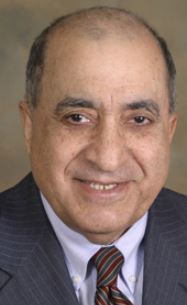“How do you prevent cardiac arrest?”
I am a 50 year old male. I want to know how can you prevent cardiac arrest?
4 Answers
CardiologistCardiologist
You can reduce the risk of heart attack and cardiac arrest by controlling the risk factors including control of blood pressure, lowering your cholesterol level, treating your diabetes and avoiding smoking all together. If you have a strong family history of heart disease you need to see a cardiologist.
A patient can have a cardiac arrest due to arrhythmias, coronary artery disease or heart failure. The best way to avoid a major medical problem would be to see your doctor regularly and make sure you follow his or her recommendations with regards to controlling or making changes to any heart disease risk facts you may have or that exist in your family's history. Hopefully you will remain healthy or, if you develop a problem, it can be addressed early so it does not progress and put you at risk for a cardiac arrest.
You should be checked by your cardiologist. If you have cardiac history, high BP, Diabetes and family history your health check up should be more frequent. Please follow his/her instructions including diet, exercise & medications.
First of all, the risk of sudden cardiac death in general population can range from 1% per year to ~ 10% per year depending on the risk factors. There are multiple causes of cardiac arrest.
The two leading risk factors include:
1. Previous heart attack (75 percent of SCD cases are linked to a previous heart attack) -A person's risk of SCD is higher during the first six months after a heart attack.
2. Coronary artery disease (80 percent of SCD cases are linked with this disease) -Risk factors for coronary artery disease include smoking, family history of cardiovascular disease, high cholesterol or an enlarged heart
Other risk factors include:
1. Ejection fraction of less than 40 percent, combined with ventricular tachycardia (see information below about EF)
2. Prior episode of sudden cardiac arrest
3. Family history of sudden cardiac arrest or SCD
4. Personal or family history of certain abnormal heart rhythms, including long QT syndrome, Wolff-Parkinson-White syndrome, extremely low heart rates or 5. heart block
6. Ventricular tachycardia or ventricular fibrillation after a heart attack
7. History of congenital heart defects or blood vessel abnormalities
8. History of syncope (fainting episodes of unknown cause)
9. Heart failure: a condition in which the heart’s pumping power is weaker than normal. Patients with heart failure are 6 to 9 times more likely than the general population to experience ventricular arrhythmias that can lead to sudden cardiac arrest.
10. Dilated cardiomyopathy (cause of SCD in about 10 percent of the cases): a decrease in the heart’s ability to pump blood due to an enlarged (dilated) and weakened left ventricle
11. Hypertrophic cardiomyopathy: a thickened heart muscle that especially affects the ventricles
Significant changes in blood levels of potassium and magnesium (from using diuretics, for example), even if there is not organic heart disease
12. Obesity
13. Diabetes
14. Recreational drug abuse
15. Taking drugs that are “pro-arrhythmic” may increase the risk for life-threatening arrhythmias
The two leading risk factors include:
1. Previous heart attack (75 percent of SCD cases are linked to a previous heart attack) -A person's risk of SCD is higher during the first six months after a heart attack.
2. Coronary artery disease (80 percent of SCD cases are linked with this disease) -Risk factors for coronary artery disease include smoking, family history of cardiovascular disease, high cholesterol or an enlarged heart
Other risk factors include:
1. Ejection fraction of less than 40 percent, combined with ventricular tachycardia (see information below about EF)
2. Prior episode of sudden cardiac arrest
3. Family history of sudden cardiac arrest or SCD
4. Personal or family history of certain abnormal heart rhythms, including long QT syndrome, Wolff-Parkinson-White syndrome, extremely low heart rates or 5. heart block
6. Ventricular tachycardia or ventricular fibrillation after a heart attack
7. History of congenital heart defects or blood vessel abnormalities
8. History of syncope (fainting episodes of unknown cause)
9. Heart failure: a condition in which the heart’s pumping power is weaker than normal. Patients with heart failure are 6 to 9 times more likely than the general population to experience ventricular arrhythmias that can lead to sudden cardiac arrest.
10. Dilated cardiomyopathy (cause of SCD in about 10 percent of the cases): a decrease in the heart’s ability to pump blood due to an enlarged (dilated) and weakened left ventricle
11. Hypertrophic cardiomyopathy: a thickened heart muscle that especially affects the ventricles
Significant changes in blood levels of potassium and magnesium (from using diuretics, for example), even if there is not organic heart disease
12. Obesity
13. Diabetes
14. Recreational drug abuse
15. Taking drugs that are “pro-arrhythmic” may increase the risk for life-threatening arrhythmias





